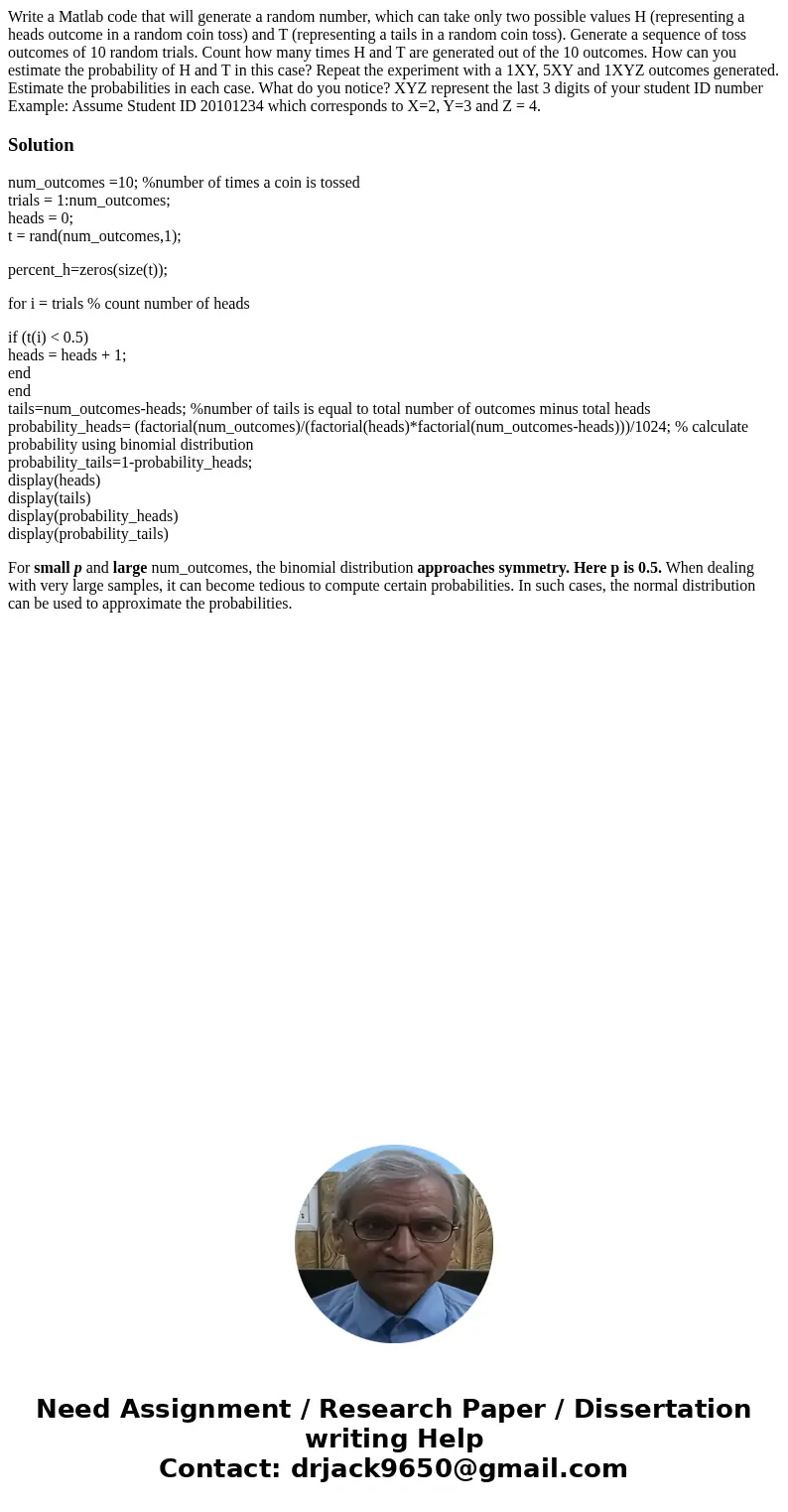Write a Matlab code that will generate a random number which
Solution
num_outcomes =10; %number of times a coin is tossed
trials = 1:num_outcomes;
heads = 0;
t = rand(num_outcomes,1);
percent_h=zeros(size(t));
for i = trials % count number of heads
if (t(i) < 0.5)
heads = heads + 1;
end
end
tails=num_outcomes-heads; %number of tails is equal to total number of outcomes minus total heads
probability_heads= (factorial(num_outcomes)/(factorial(heads)*factorial(num_outcomes-heads)))/1024; % calculate probability using binomial distribution
probability_tails=1-probability_heads;
display(heads)
display(tails)
display(probability_heads)
display(probability_tails)
For small p and large num_outcomes, the binomial distribution approaches symmetry. Here p is 0.5. When dealing with very large samples, it can become tedious to compute certain probabilities. In such cases, the normal distribution can be used to approximate the probabilities.

 Homework Sourse
Homework Sourse